As if acne breakouts aren’t frustrating enough! The aftermath of an acne breakout is usually a big red or purple scar that sits there for ages. Acne scarring can occur on the face and other areas of the body like the back and leave sufferers with low self-confidence and social embarrassment. Acne affects between 40 million and 50 million individuals in the United States alone. Although acne mainly affects adolescents, it is also present in children and adults. One study found some degree of facial acne in 54% of women and 40% of men older than 25 years.
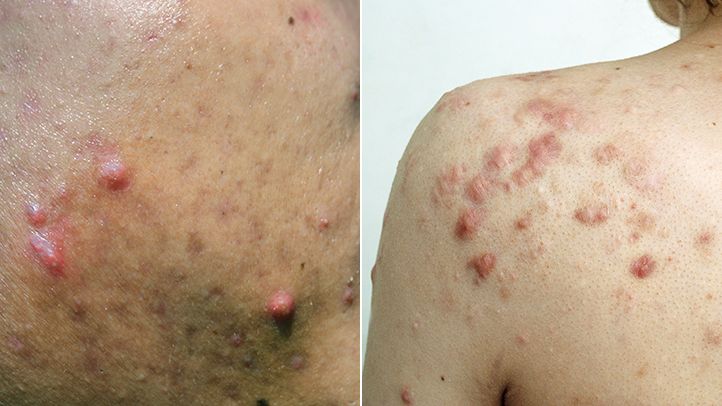
So how does acne form?
Acne often appears when hair follicles, or pores, on your skin get clogged by oil and dead skin cells, forming comedones. Then bacteria can start to grow, causing inflammation and red bumps. Acne is caused by many factors, including hormones and food allergies.
Acne can be mild, moderate, or severe. In severe cases, acne can cause painful, pus-filled bumps, called nodules or cysts, beneath the skin’s surface.
Generally, acne doesn’t leave marks, but permanent scarring is more likely to develop if you are a ‘pimple popper’ or addicted to squeezing zits instead of treating it properly or allowing it to heal.
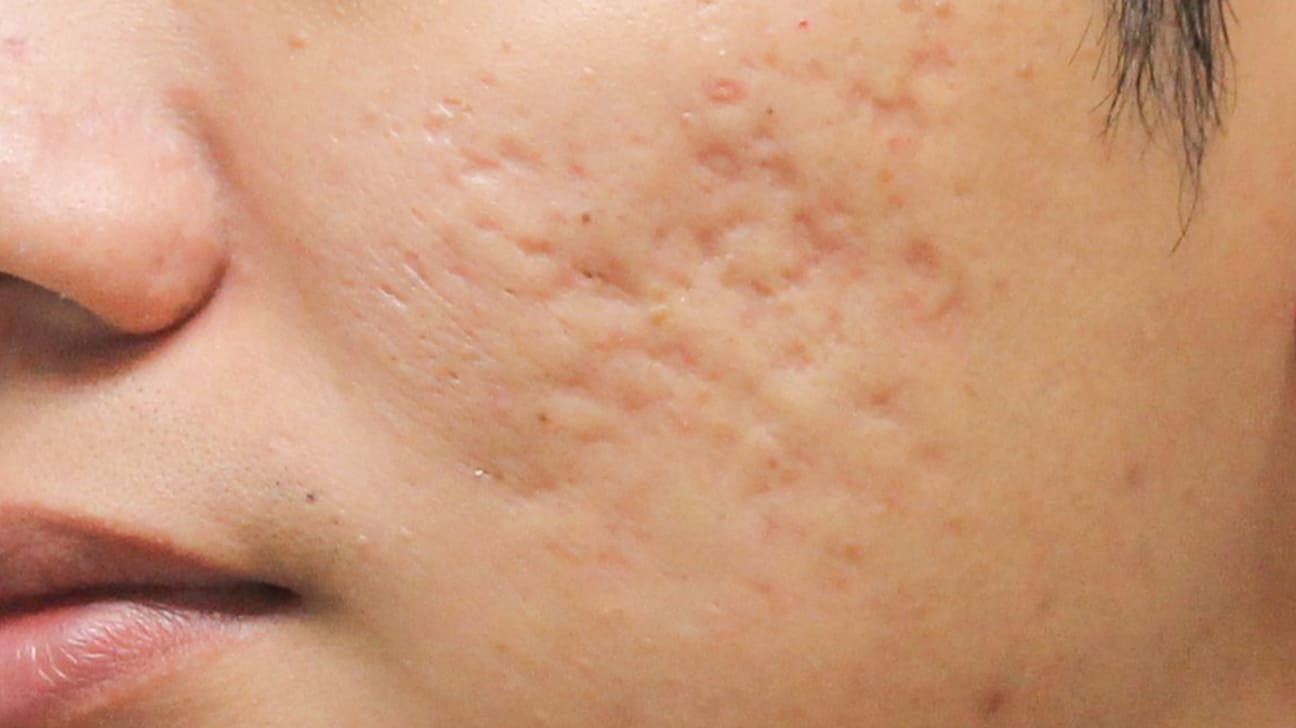
So, what kind of acne scarring occurs? There are many types of acne scars, and many treatments out there for each type.
- The first kind is post-inflammatory hyperpigmentation– Once your acne heals, it often leaves behind a darker or discoloured patch of skin. This is not a scar and will resolve on its own with a good sun protection regimen. Hyperpigmentation can occur when skin is damaged by severe acne, or if you’ve picked at your acne. But again, in the majority of cases, your skin will return to its natural colour over time with proper sun protection. People most likely to experience post-inflammatory hyperpigmentation include those who have darker skin and those who pick or squeeze their acne.
- Then we have:
- Atrophic scars. Atrophic scars are flat, shallow depressions that heal below the top layer of skin. These scars are commonly caused by severe cystic acne. However, other types of acne can cause them as well. The appearance of atrophic acne scars can vary depending on a person’s history with acne. Atrophic scars fall into three categories:
- 1. Boxcar scars are broad, usually box-like depressions with sharply defined edges. Boxcar scars are caused by widespread acne, chickenpox, or varicella, a virus causing a red, itchy rash with blisters. Boxcar scars most often form on areas like the lower cheeks and jaw, where the skin is comparatively thick.
- 2.Ice pick scars are smaller, more narrow indentations that point down into the skin’s surface. These scars are common on the cheeks. Ice pick scars tend to be very tough to treat and often require persistent, aggressive treatment (like Laser treatment)
- 3. Rolling scars have a varying depth, with sloping edges that make skin appear wavy and uneven.
- Hypertrophic and keloid scars- Unlike atrophic scars, hypertrophic and keloid scars form as raised lumps of scar tissue where the acne once was. This happens when scar tissue builds up, sometimes from previous acne spots. Hypertrophic scars are usually the same size as the acne that caused them. Keloid scars create a scar larger than the acne that caused them and grow beyond the sides of the original spot. Hypertrophic and keloid scars are more common in areas such as the jawline, chest, back, and shoulders. People with darker skin colour are more likely to develop this type of scarring.
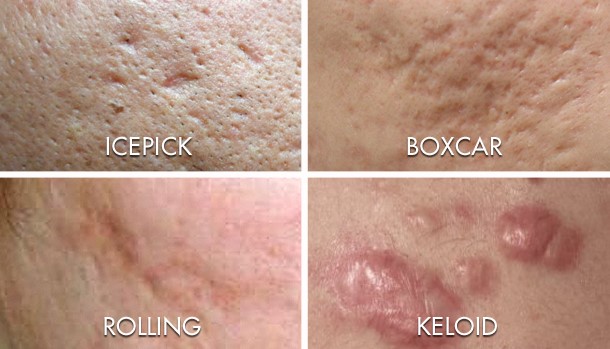
Now that we know what kind of acne scarring there is, we’re going to look at some very effective (and proven) home remedies for healing mild to moderate acne scarring.
Note: treating aggressive or more severe forms of acne scarring should always be conducted by a Dermatologist.
- Salicylic acid is a naturally occurring compound that is often an ingredient in acne skincare products. Salicylic acids in helping clear dirt, skin cells, and other debris that leads to acne from the pores of the skin. It also helps reduce swelling and redness in the area, which may minimize the appearance of scarring. Salicylic acid is beneficial for all scar types. It makes a good addition to a daily skincare routine for most people who live with acne. People with sensitive skin may need to test a product containing this acid on a small area of skin before using it on their entire face, as it may cause dryness or irritation.
- Retinoids (or Retinols)– Some topical retinoids may help get rid of acne scars. As the authors of a review in the journal Dermatology and Therapy Trusted Source note, topical retinoids block inflammation, reduce acne lesions, and speed up cell regeneration. The authors also state that retinoids could help lighten hyperpigmented acne scars, including those in people with darker skin tones. It is important to note that retinoids can make the skin sensitive to the sun. Anyone using retinoids for acne or scar treatment should wear sunscreen (SPF30+) when going outdoors.
- Alpha hydroxy acids– Alpha hydroxy acids (AHAs) can help get rid of dead skin cells and prevent clogged pores. Doctors may recommend AHAs for treating acne and reducing the appearance of acne scars. AHAs are a mild form of acid that scrapes away the outer layer of skin to reveal fresh, new skin underneath. This process may help with discolouration due to scarring.
- Lactic acid- Lactic acid can act as a gentle peel to pull away dead skin cells. It may help reduce the appearance of scars and smooth the overall texture of the skin. Lactic acid may also help lighten dark scar tissue, although it may cause hyperpigmentation. For this reason, you must test the product out before using it.
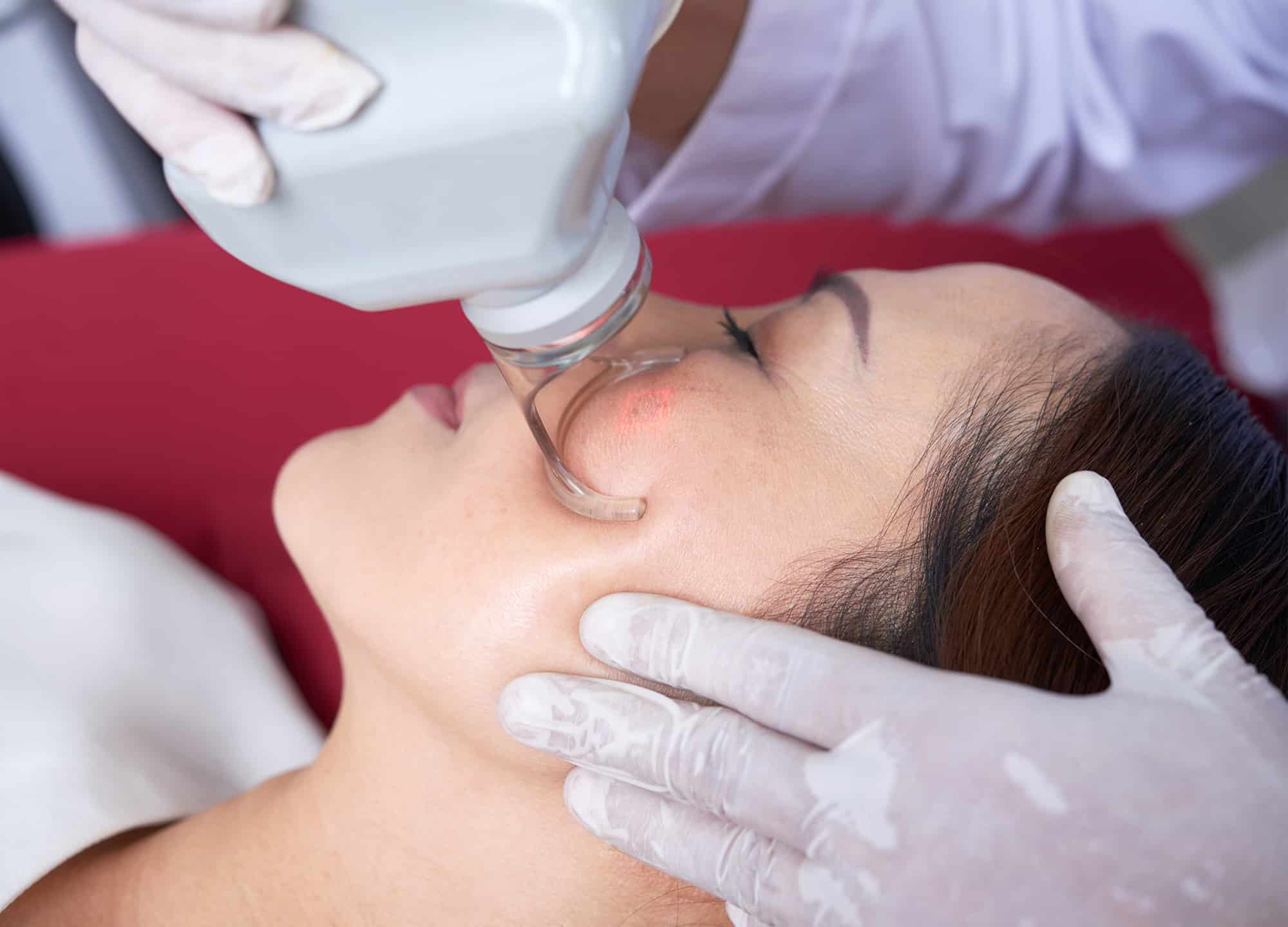
Let’s talk about natural remedies
You may have noticed, but it’s very common to see ‘natural remedies’ for acne and acne scars all over social media, TikTok and Instagram are two very good examples. The science behind such remedies isn’t clear and you should practise extreme caution when trying such treatments (remember, it’s your face!) Some may cause further harm than good, so I suggest that people should use them with caution.
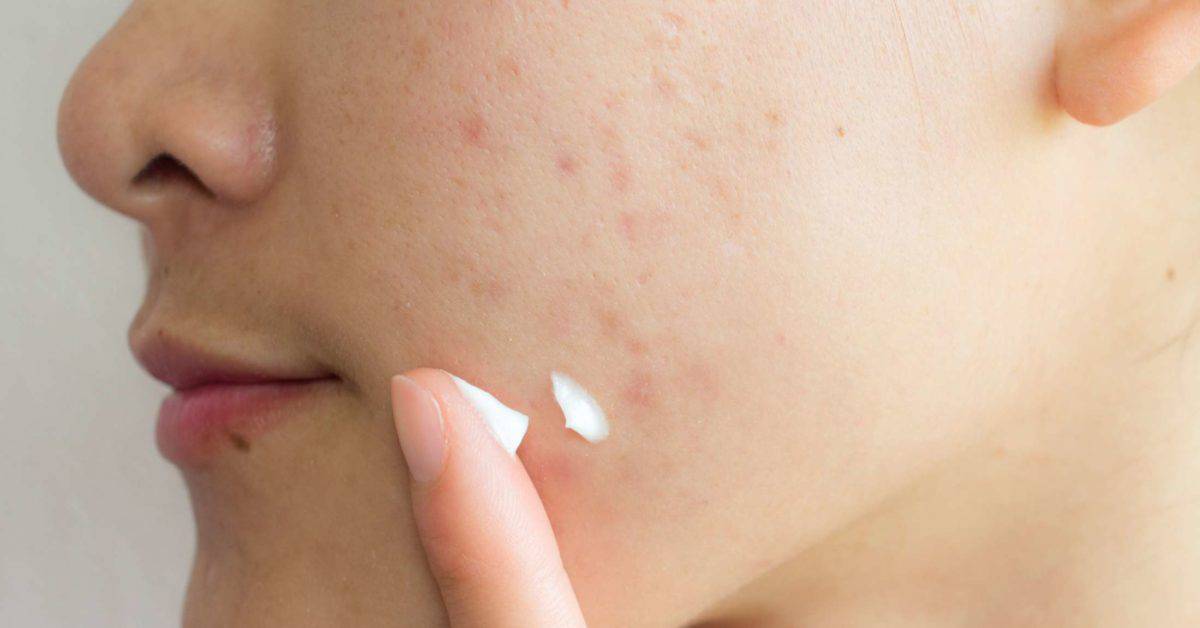
Home remedies that people have traditionally used to treat acne scars include:
- coconut oil (very comedogenic and blocks pores, causing further acne)
- shea butter (very comedogenic and blocks pores, causing further acne)
- aloe vera gel
- raw honey (Manuka honey is the best and has worked well on my skin, remember honey is antibacterial)
- baking soda
- lemon juice
Now let’s look at some more ‘high level’ acne scar treatments (start opening your purses)
- IPL Laser. Kendall Jenner tried this, and it worked. The reality star admitted that laser treatments did wonders for her skin when she was scrutinised by the public for suffering from acne. IPL lasers are non-invasive and extremely gentle to the skin, so it’s the perfect lunchtime treatment. Not just for hair removal, IPL lasers have a fantastic anti-inflammatory role and can take action against the bacteria that cases acne, but they also work well to reduce redness and skin staining. Just be prepared to undergo multiple sessions and maintenance treatments for good results. So be prepared to spend. The only problem with most lasers is that they work better on paler skin due to pigments, so won’t be your best bet for darker skin tones.
- Dermal Fillers– Not just here to make you look like a contestant on MAFS, fillers can be used to help an array of skin problems, one of them being acne scars. A tiny amount can temporarily plump and smooth over any skin craters left behind from acne. Your skin’s initial reaction may be to bruise, swell up and go red but be patient and wait for the magic to happen. As acne scarring treatments go, this one isn’t the priciest and is relatively non-invasive and pain-free. Hooray!
- Radio frequency with Micro Needling Treatment- This is a powerful (yet somewhat unknown) combination and is designed to rebuild collagen and elastin using pulses of light energy from radio waves with microscopic needles that gentle puncture skin to help fill the indentation acne scars tends to leave behind. The idea is to leave skin looking brighter and firmer with scars looking smaller and lighter in colour, whilst skin texture is left touchable smoother. Unlike with IPL, this can work no matter what your skin tone and has minimal downtime, with redness only sticking around for an hour or two after. Chat with your aesthetician about this treatment
- Exo Needling– Micro needling on its own isn’t effective enough to completely get rid of acne scarring but combining it into treatment does the trick. One of the most popular Acne Scar Treatments across the globe is Exo Needling. This procedure is basically a combination of deep micro-needling and Exo infusion. The serum, that is, Exo derived from the blood of the patient itself (advancement of the more well-known PRP (Platelet-Rich Plasma) is exceptionally high in the growth factors. Think vampire facials, but not so creepy. PRP works to promote collagen and elastin production, key players in keeping skin maintain that healthy glow.


Personally, the best advice I can give anyone with acne or acne scars is to Wear SPF! And I mean, every day!
It might seem like the simplest way to get rid of acne scars and I often talk about this in-depth on my Instagram, but SPF does solve all your skin troubles. Not only does it protect against the dreaded sun damage, but it helps avoid the more long-term risk of skin cancer and, in turn, the marks it can leave on your skin. So, lather on the SPF, drink lots of water, get lots of sleep and see a dermatologist if you must! Your skin is the first thing people see and it’s an investment, take good care of it.

This article is not intended to provide specialty medical advice, and the points in this article may not apply to everyone.
Always seek professional medical advice when in doubt.
Despina Karpathiou is a certified makeup artist, accredited beautician, skincare product advisor and lifestyle writer based in Sydney, Australia. She is currently studying a double Bachelor of Communication & Business and is passionate about makeovers and healing skin (and health) conditions from the inside out. Follow her here for all things skin, health and beauty.
The Top Three foundations you MUST HAVE if you have problem skin


